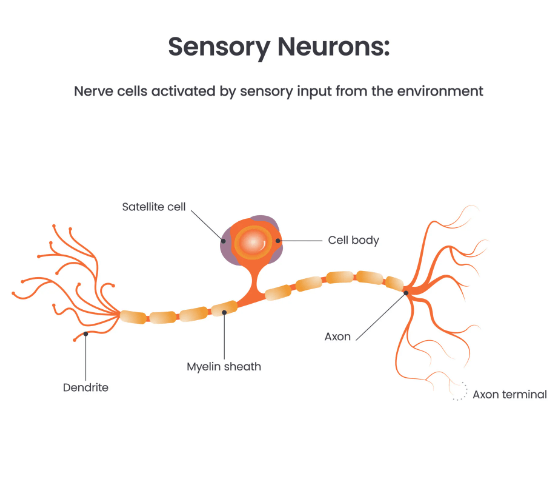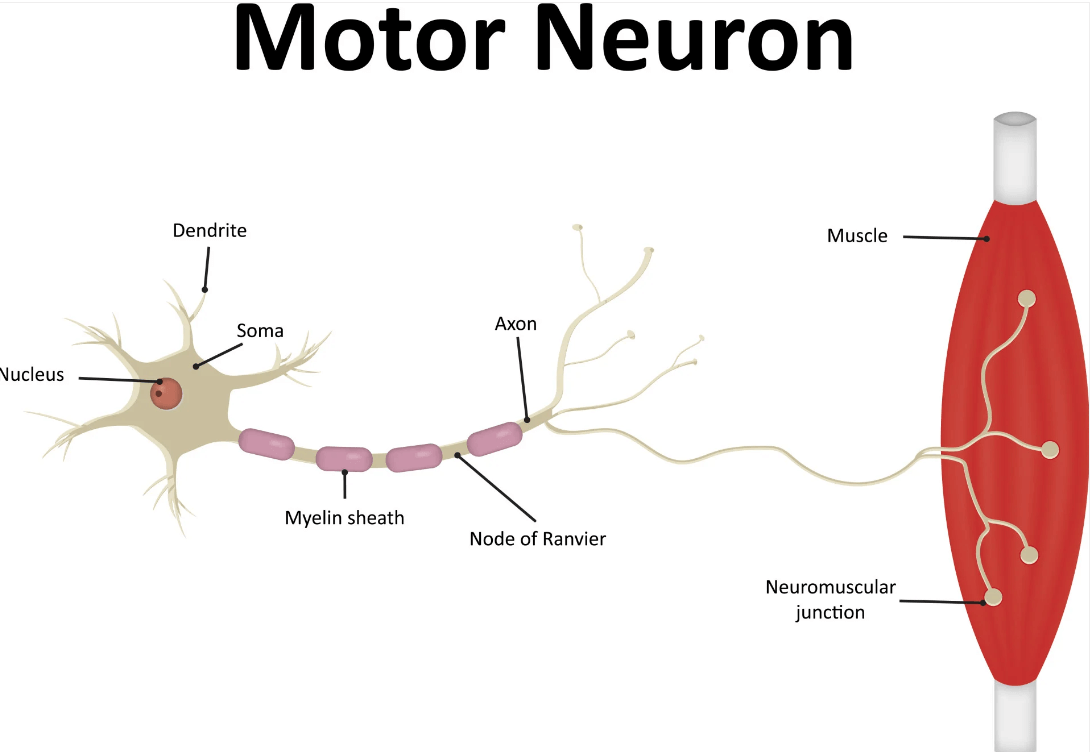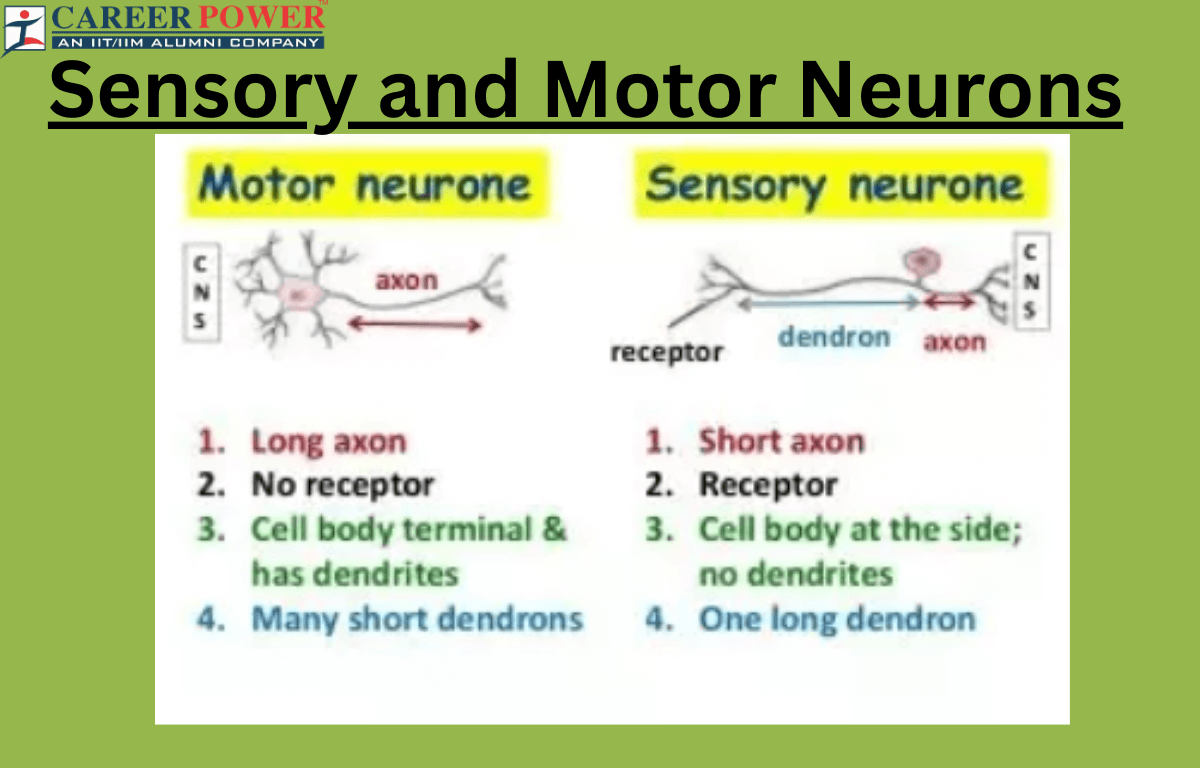Sensory neurons receive information from the body’s sensory organs and send signals to the brain, allowing us to sense the environment. On the other hand, motor neurons transmit signals from the brain and spinal cord to control muscles and glass, enabling movements and responses. In simple terms, sensory neurons gather information, while motor neurons initiate actions in response to that information. Here we have briefly discussed a few differences between sensory neurons and motor neurons.
Sensory and Motor Neurons
Sensory and Motor Neurons are two types of nerve cells in the nervous system, each with specific functions. Sensory neurons receive sensory input and send it to the central nervous system (brain), enabling us to perceive the world; while motor neurons carry signals from the Brain to control muscles and glands, allowing the body to respond to sensory inputs and other bodily activities.
What are Sensory Neurons?
Sensory neurons, also known as afferent neurons, are responsible for transmitting sensory information from various parts of the body to the central nervous system (the brain and spinal cord). They receive signals from sensory organs, such as the tongue, and convert these external stimuli into electrical signals. These signals are then transmitted to the brain, where they are interpreted as sensations like touch, pain, temperature, taste, and smell. Sensory neurons play a crucial role in our ability to perceive and respond to the environment around us.

What are Motor Neurons?
Motor neurons, also called efferent neurons, carry signals from the central nervous system to muscles, glands, and other effector organs. These neurons are responsible for controlling muscle movements and glandular activity. When the brain or spinal cord sends signals to the muscles, instructing them to contract or relax, motor neurons are the messengers that deliver these commands. This process allows us to perform voluntary movements, such as walking, talking, and reaching, as well as involuntary movements, such as those involved in heartbeat and digestion.

Difference Between Sensory and Motor Neurons
Sensory neurons and Motor neurons are two types of neurons in the nervous system that play distinct roles. Here we have discussed a few differences between sensory and motor neurons. These differences will highlight the specialized function of sensory and motor neurons in the nervous system.
| Difference Between Sensory and Motor Neurons | ||
| Aspects | Sensory Neurons | Motor Neurons |
| Function | The sensory neurons transmit sensory information to the Central Nervous System. | The motor neurons transmit signals from the central nervous system to muscles. |
| Direction | Sensory neurons transmit impulses from sense organs to Central Nervous System. | The motor neurons transmit impulses from the Central Nervous System to effectors. |
| Location | The sensory neurons are found in sensory organs and ganglia. | The motor neurons are located in the central nervous system. |
| Impulses | Sensory neurons receive external stimuli. | Motor neurons initiate muscle contractions. |
| Axon Length | Sensory neurons are long axons to reach the spinal cord or brain. | The motor neurons are short axons to reach muscles or glands. |
| Myelin Sheath | The sensory neurons may or may not be myelinated. | The motor neurons are myelinated for faster signal transmission. |
| Synapses | Synapses with interneurons in the spinal cord. | Synapses with muscle fibers at the neuromuscular junction. |
| Voluntary Control | Sensory neurons show involuntary actions (reflex actions). | Motor neurons show voluntary actions (under conscious control). |
| Response Time | Sensory neurons give rapid responses to stimuli. | Motor neurons give slower responses due to synaptic delay. |
Importance of Sensory and Motor Neurons
Sensory and motor neurons are fundamental components of the nervous system, enabling organisms to perceive and interact with the environment effectively while ensuring proper bodily movements and functions. Their functions are essential for survival, learning, communication, and overall quality of life. Here we have mentioned the key points highlighting the importance of sensory and motor neurons:
Importance of Sensory Neurons
- Environmental Interaction: Sensory neurons allow the body to interact with the environment by perceiving sensory information, enabling humans and animals to respond to various stimuli.
- Survival: Sensory neurons are crucial for survival as they alter the body to potential dangers, allowing for quick responses to threats such as heat, cold, or pain.
- Learning: Sensory input is essential for learning and memory formation, providing the brain with information about the surrounding world, which is vital for cognitive development.
- Adaptation: Sensory neurons help the body adapt to different environmental conditions, ensuring appropriate responses to changes in temperature, pressure, or other external factors.
Importance of Motor Neurons
- Movement and Function: Motor neurons enable voluntary and involuntary movements, allowing individuals to perform daily activities, from simple tasks to complex actions.
- Communication: Motor neurons facilitate communication between the brain and muscles, ensuring precise and coordinated movements, speech, and facial expressions.
- Maintenance of Body Functions: Motor neurons control involuntary functions like heartbeat, breathing, and Digestion, maintaining essential physiological processes necessary for life.
- Recovery and Healing: Motor neurons play a vital role in rehabilitation after injuries, allowing individuals to regain movement and functionality through physical therapy and exercise.



 50 Vegetables Name for Kids in English a...
50 Vegetables Name for Kids in English a...
 Food Chain: Definition, Types, Examples,...
Food Chain: Definition, Types, Examples,...
 Human Respiratory System: Definition, Di...
Human Respiratory System: Definition, Di...













